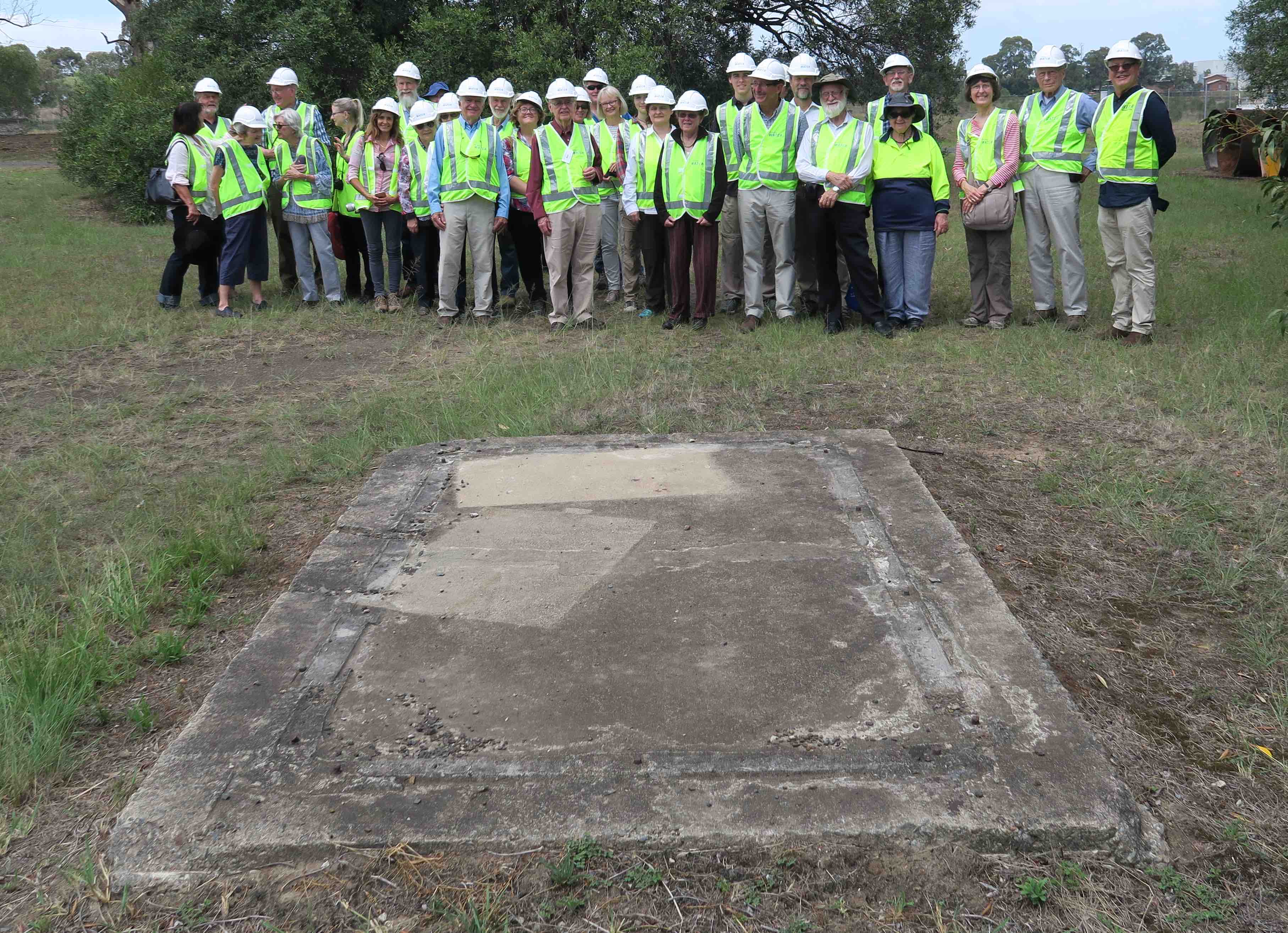|
Following the book launch of the
Four Pillars of Radio Astronomy last month, a tour was
arranged to the Potts Hill reservoir site, which hosted a number of
radio telescopes between 1948 and 1963. Yesterday's ADAP showed the
base to the 36 foot (11 m) antenna: the image above shows the tour
group standing behind the foundation for another antenna -- a 16-ft x
18-ft paraboloid. This instrument was used by Chris Christiansen and
Bernie Mills for observations of the 1948 partial solar eclipse that
resulted in their first published papers in radio astronomy. The
telescope was also used by Christiansen and Jim Hindman to confirm the
discovery of the 21-cm hydrogen line in 1951 and to produce the first
radio map of neutral hydrogen in our galaxy, confirming its spiral
structure. It was also used by Jack Piddington and Harry Minnett in
1951 to discover a discrete radio source (Sagittarius A) that later
turned out to be the massive black hole at the centre of our galaxy.
It is thus a very important historical site in radio astronomy!
More details are given in the
paper by Orchiston and Wendt.
(Acknowledgements to John Sarkissian for the picture and Harry Wendt for text.)
|
